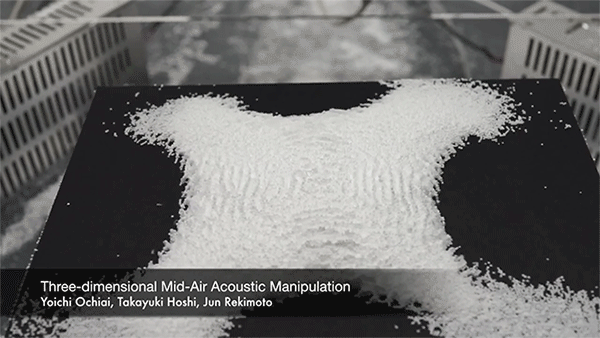I have been watching this closely.
By.
Posted in futurism
I have been watching this closely.
By.
Posted in futurism

Japanese researchers have developed a way of not only levitating, but also moving objects three dimensionally using sound waves. The device uses four arrays of speakers to make soundwaves that intersect at a focal point that can be moved up, down, left, and right using external controls. And to human ears the device is completely quiet, as it uses ultrasound.
Occupational exposure to ultrasound in excess of 120 dB may lead to hearing loss. Exposure in excess of 155 dB may produce heating effects that are harmful to the human body, and it has been calculated that exposures above 180 dB may lead to death.[45] The UK’s independent Advisory Group on Non-ionising Radiation (AGNIR) produced a report in 2010, which was published by the UK Health Protection Agency (HPA). This report recommended an exposure limit for the general public to airborne ultrasound sound pressure levels (SPL) of 70 dB (at 20 kHz), and 100 dB (at 25 kHz and above).
“We shape our tools”, the old maxim goes, “and thereafter our tools shape us.” But what if both man and tools could shape and guide each other — as equals?
That’s the dream of the Senior Director of Advanced Technology at InvenSense, a TDK Group Company, Dr. Peter G. Hartwell, who believes we are heading into a profound new age of man-machine collaboration, led by breakthroughs in sensor technology. “Some problems simply can’t be solved using human senses or machine capabilities alone; we need a fusion of the two,” says Hartwell.
The problems which Hartwell targets are at the very core of a life well lived: customized health care, more energy-efficient infrastructure, productive workplaces, safer cities, and improved environmental monitoring.
Explore our graphical guide to the advances of the future, from 2013 to 2150.
As we begin a new year, BBC Future has compiled 40 intriguing predictions made by scientists, politicians, journalists, bloggers and other assorted pundits in recent years about the shape of the world from 2013 to 2150.